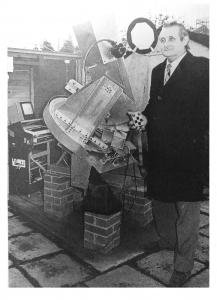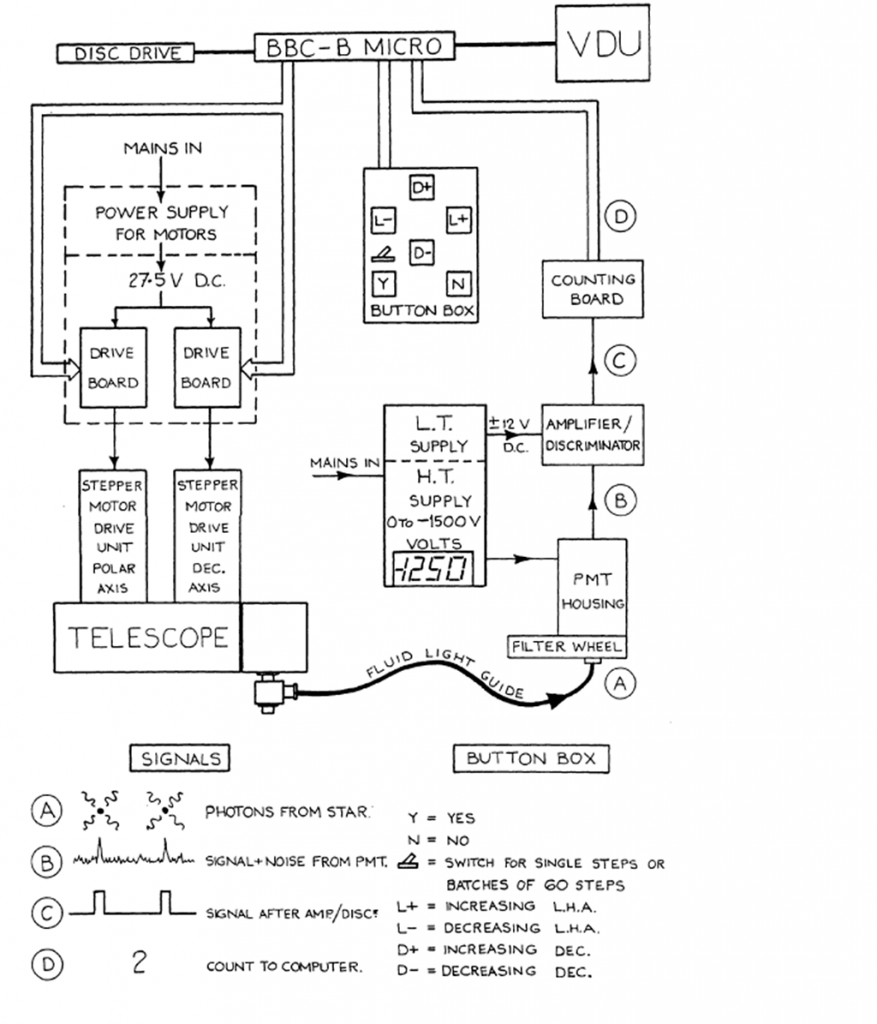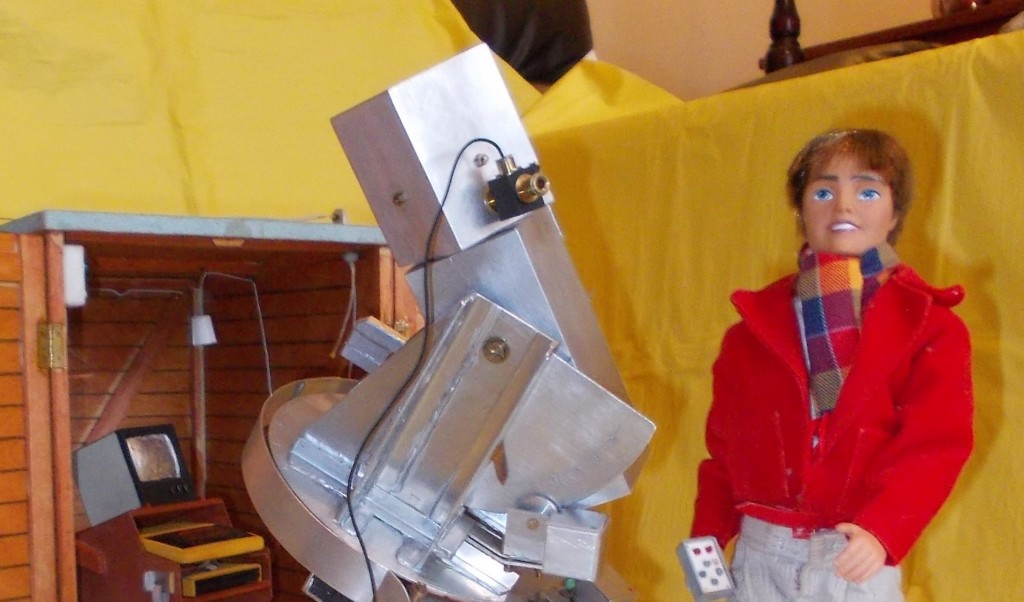The Robot Telescope
In the late 1980s, amateur astronomer Jack Ells built an Automatic Photoelectric Telescope (APT) that, after a half-hour set-up, could operate unattended all night under the control of a BBC microcomputer.
This ‘Robot Telescope’ was used to collect data about variable stars and was so well constructed that it could produce work of a professional standard.

The APT being set up by Jack Ells; the top image shows a 1/6 scale model of the telescope
Jack Ells was a mechanical engineer by profession, working for British Petroleum and obtaining many patents for the company during his career. He was also a keen amateur astronomer, and in 1988 the British Astronomical Association presented him with the Steavenson Award for “an outstanding contribution to observational astronomy,” mainly for the construction of the APT, which continued to be used by others for several years after his death in 1990.
An account of Jack Ells’s astronomical work is outlined throughout Advanced Amateur Astronomy by Gerald North (CUP, 1997), the first edition of which was dedicated “TO MR JACK ELLS, skilled innovator and observer of the first order.”
Jack’s son Peter Ells, who wrote the software for the BBC Micro, gives a Table Talk at the Museum about the Robot Telescope on Saturday 18 October 2014, 2.30pm.
This event is part of the programme for our Geek is Good special exhibition.

Schematic diagram of the APT system; the Signals section shows the stages required to input the photon count to the BBC microcomputer
Scott Billings – Public engagement officer
